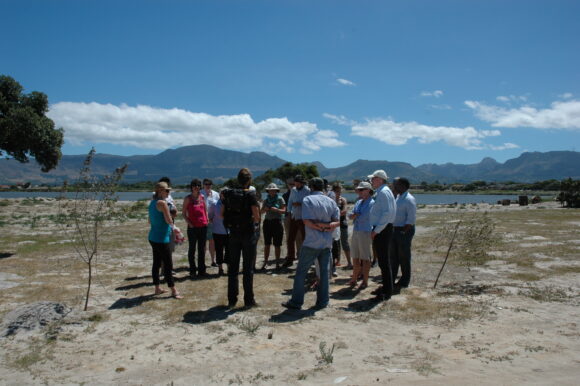3 November 2014 | By James Rodger
C·I·B alumnus James Rodger is a co-author on a recently published study that traces the invasion history of fire weed (Senecio madagascariensis) in Australia, using DNA from herbarium specimens dating back to its introduction, as well as present-day collections. This is one of the first studies to use this approach.

Photo credit: Forest and Kim Starr (Wikimedia creative commons)
Fireweed is an invasive annual daisy which has had a devastating effect on livestock farming in eastern Australia. It is toxic to animals and competes strongly with pasture grasses, especially after fire. It is native to southern Africa and Madagascar and was introduced from KwaZulu Natal to New South Wales around 1918, before becoming invasive in the 1980’s.
DNA from herbarium specimens showed that new haplotypes appeared in Australia shortly before the invasion took off, suggesting that new genetic material from a second introduction event may have triggered it. This could have been a result of newly introduced genotypes that were already more suited to the Australian environment. Although the possibility that new variants were generated spontaneously in Australia could not be ruled out, the new haplotypes were first found near Sydney, a major port, making it more likely it was a new introduction.
Present-day collections from South Africa showed little genetic differentiation, so it was not possible to narrow down the source of the introductions within KwaZulu-Natal, although initial haplotype composition in Australia matched populations near Durban most closely. Durban is also a likely source of for the introduction as it was the only major port in KwaZulu-Natal at the time.
This study highlights how historical herbarium collections can be valuable to understanding the invasion process. “Current genetic patterns may not reveal the historical information needed for detecting multiple introductions. In this study we show how molecular studies of present-day and historical samples can be combined to build a more complete picture of the invasion history of an introduced species.” says Dr James Rodger.
Read the paper
For more information, contact James Rodger at jgrodger@sun.ac.za


